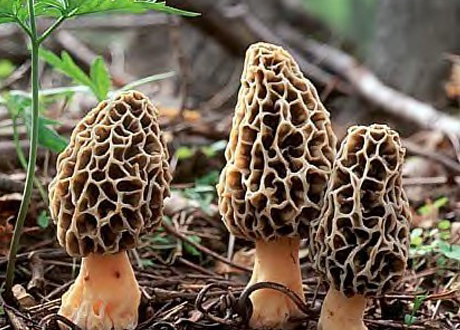We last covered five distinguished species of ducks, and will be moving on to the duck’s larger, more intimidating cousin for today’s article. To start, we’ll find ourselves looking at a familiar face.
Canada Goose

Here in the northeastern United States, these guys are everywhere. We all probably know the proper code of conduct around one at this point: Don’t provoke them, they have bad tempers.
Notorious for their aggression and apparent lack of fear, Canada geese have been terrorizing people for time immemorial. Countless photographs and videos document these feathered menaces swooping and charging at unsuspecting passersby, who seem to have just been going about their days with no ill intent. This has even earned the Canada goose the popular internet moniker of “cobra chicken.”
The trend of avian bloodthirst begs the question: Why do Canada geese constantly seem to be out to get everyone? And is that even true?
The thing is, Canada geese don’t tend to fear humans. Areas where humans and Canada geese are active have a large overlap, which normalizes contact between us and them. Secondly, they’re very territorial, especially during mating season or when goslings are nearby. The fact that Canada geese often nest in areas with lots of human traffic doesn’t help the possibility of human intruders, who must consequently then be exterminated.
Fortunately, geese attacks generally won’t cause any serious damage, and most recorded instances resulted in the human sustaining only minor, if any, injuries. Most cases with more serious injuries involved people panicking and making things worse for themselves, or people on moving objects (such as bikes) who got knocked off. Overall, Canada geese don’t pose a threat to humans, but you’d nonetheless be in for a nasty surprise if you tried to pet one.
Snow Goose

These pink-billed, white-feathered geese participate in large-scale migrations for over half the year, and will stop at “layover” sites en masse in massive flocks. As they migrate along narrow corridors, certain regions at given points in the year may experience a sudden influx of winged visitors carpeting their fields. According to Discover Lancaster, over 200,000 geese may stop by its local wildlife management area on their way back north in the spring.
That is a number I can totally confirm, as I had the great fortune of seeing one snow geese stopover event two years ago in this Lancaster County, Pennsylvania. The birds covered the fields like a great white blanket before lifting off and taking to the skies in showstopping groups in numbers so dense they practically blocked out the sky, leaving only small gaps of blue. I don’t even know how many geese there were that day, but 200,000 certainly sounds reasonable.
Toulouse Goose

If you’re ever interested in owning a goose and have the necessary accommodations, the massive Toulouse goose may be one of the best options. Recognized as the largest goose with an average weight of 9 to 13 kg, the Toulouse is a gentle giant known for being one of the most docile geese out there.
The breed’s history dates back to medieval times; they were originally bred for meat in southwestern France, and only became heavier over time as they were exported to more countries for their goose meat and fat production. Today, they serve as both a meat as well as exhibition or pet breed.
Chinese Goose

A distinctive combination of a swan-like, slender neck and a peculiar beak knob makes the Chinese goose very easy to recognize. It descends from the Asian wild swan goose, and its dignified strut indicates it as such. It comes in two color varieties, brown and white.
Historically, these geese have been popular on Chinese rural homesteads and farms for several reasons. Chinese geese are known to be the most prolific egg layers of all goose breeds, with counts of up to 100 eggs a year, and also make exceptionally good “guard dogs” due to their talkative and alert nature.
Barnacle Goose

As we move onto our final goose and arguably the star of today’s show, we’ll need to answer one iconic question first: What came first, the goose or the egg?
Medieval Europeans would’ve chosen a secret third answer option: the tree.
In the Middle Ages, there were many interpretations for how the barnacle goose came to be. One theory was that they grew from trees or dead wood hanging over bodies of water; they’d cling to branches or planks by their beaks until they were strong enough to fly, and then they’d all be off on their merry ways. Another theory reasoned that since barnacle geese were so often spotted hanging about on the shore, surrounded by timber home to hundreds of black-and-white barnacles (which bore a suspiciously striking resemblance to the goose itself), surely they must’ve hatched from those barnacles. Yet another theory claims that the rotten wood of wrecked ship hulls spawned in worms and grew to become the barnacle goose.
Of course, there were skeptics. Holy Roman Emperor Frederick II dismissed the myth in 1241, saying that people who believed in this legend were simply “[ignorant] of [the barnacle goose’s] real nesting places.” We now know that Frederick is correct, and that all geese hatch from eggs.
Unfortunately for Frederick, however, most people in the Middle Ages didn’t share his insight. Those myths of barnacle geese hatching in the strangest ways became widespread and widely believed in the Middle Ages. And as a result of the barnacle goose’s dubious origins, the habits of diet surrounding its meat changed accordingly as well. Catholics, Christians, and Jews who followed religious dietary restrictions would debate the nature of the goose’s meat and whether it was appropriate to consume on fasting days and holidays. While Pope Innocent III declared in 1215 that barnacle geese meat was to be forbidden on certain days as any other meat was because it behaved like a bird and thus should be treated as such, some other bishops or Jewish rabbis had no problem eating the flesh, as they considered the barnacle goose not born of flesh. For them, the goose’s meat fell under either categories of “fish” or “fruit.”
Due to lack of information on bird nesting and migration patterns, it wouldn’t be until the 20th century that the myth would really begin to see a steep decline in popularity. In the 1900s, contributions by Charles Darwin in the discovery of evolutionary biology and the resulting revolution in evolutionary studies also no doubt played a role in dispelling these old myths.
As a fun finish, here’s some medieval portrayals of barnacle geese hatching.


